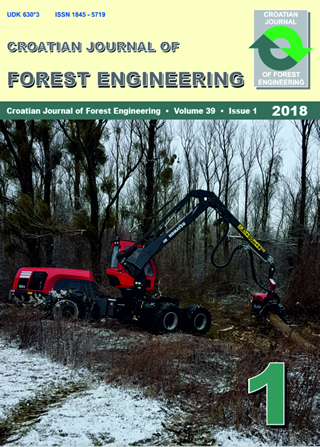Study of Forest Road Effect on Tree Community and Stand Structure in Three Italian and Iranian Temperate Forests
volume: 39, issue: 1
pp: 14
- Author(s):
-
- Picchio Rodolfo
- Tavankar Farzam
- Venanzi Rachele
- Monaco Angela Lo
- Nikooy Mehrdad
- Article category:
- Original scientific paper
- Keywords:
- forest road, logging, tree species diversity, SIV, tree dieback intensity index
Abstract
HTML
Roads are built in forests for two main reasons, but always in function of management of forest
ecosystems, and these reasons are to provide access to the forest area for transportation
mobility and wood extraction. This creates a relatively even network in the forest. This topic
has received much attention in recent years due to its function and effect on forested rural
landscapes and the related environment. Forest road network is important for various types
of functional use, such as the interface between forested lands and roads. The aim of this study
is to assess the effects of road existence and use on the occurrence of tree dieback and on the
composition of the tree community in three forest areas (two in Italy and one in Iran). The
effort to determine the dynamics of the effects caused by road use was done by examining the
changes in stand structure and abundance of species. As demonstrated by the results, the
edges (20 m) of the forest road network are a fine mosaic composed of different trees (qualitative
and quantitative), coupled with the moderate presence of dead trees. In the three areas, from
the road edges to the interior forest, a similar taxonomic composition of forest community was
found. The first main difference was related to the abundance of less shadow tolerant species
along the road. The second main difference was related to the tree biodiversity indices that are
higher along the road. The main similarities are in the structure of live and dead trees.

